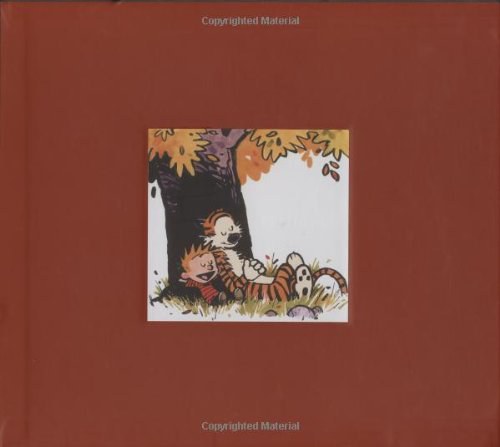
Bryan C|Thomas《Qualitative Communication Research Methods》
书刊介绍
内容简介
This book is the only guide dedicated to qualitative research methods in communication. It introduces readers to every step of the qualitative research process, from developing research topics and questions, through writing a final report. In addition to covering the theories and methods currently used in qualitative communication research, the authors also discuss important trends influencing the future of that research.
作品目录
Preface xii
Acknowledgments xvi
Chapter 1 Introduction to Qualitative Communication Research 1
Introduction: Working With (and Studying) Cops 1
Four Paradigms and (Maybe) a Funeral: A Brief History of Qualitative Communication Research 5
Feeling Corporate, Going Global: Two Trends in Qualitative Communication Research 13
Looking Closer: The Conduct of Qualitative Research in Communication 17
Applied Communication 17
Group Communication 18
Health Communication 19
Intercultural Communication 20
Interpersonal Communication 21
Language and Social Interaction 21
Media and Technology Studies 22
Organizational Communication 24
Performance Studies 25
Rhetoric 27
Strategic Communication 28
Conclusion 29
Chapter 2 Theoretical Traditions and Qualitative Communication Research 33
Qualitative Research and Communication Theory 33
The Phenomenological Tradition 35
The Sociocultural Tradition 39
Ethnomethodology 39
Symbolic Interactionism 42
Social Constructionism 45
Ethnography of Communication 46
Structuration Theory 49
Actor Network Theory 51
The Critical Tradition 52
Feminism 58
Postcolonialism 60
Critical Race Theory 63
Cultural Studies 65
Conclusion 69
Chapter 3 Design I: Planning Research Projects 71
Introduction 72
"My City, My Society, and My Life": Renee's Story 72
Sources of Research Ideas 75
Personal Experiences and Opportunities 75
Theory and Research Literature 78
Public Problems 83
Funding Priorities 84
Moving Toward a Commitment 86
Evaluating the Scene 87
Casing the Scene 88
Assessing Feasibility 90
Consulting Colleagues, Mentors, and Experts 93
Developing Emic and Etic Perspectives 94
Conclusion 95
Chapter 4 Design II: Implementing Research Projects 97
Introduction 97
Negotiating Access 98
Gatekeepers 98
Sponsors 100
Telling a Research Story 101
Clarifying the Involvement 104
Exploratory Methods 105
Sampling 109
Sampling Units 110
Sampling Strategies 112
Sample Size 116
Human Subject Protections 118
Informed Consent 119
Instruments 123
Vulnerable Groups 124
Data Security 125
Textual Representation 125
The Research Proposal 127
Title 127
Abstract or Executive Summary 128
Rationale 128
Conceptualization 128
Research Questions 130
Methodology, Protocol, and Logistics 130
Analysis 131
Schedule 131
Conclusion 131
Exercises 132
Chapter 5 Producing Data I: Participating, Observing, and Recording Social Action 133
Introduction: Fieldwork, Ethnography, and Participant Observation 133
Successful Participant Observation 136
Tolerance for Marginality 136
Embodiment 137
Spontaneous Decision Making 139
Being an Ethical Person 139
Difference Matters 141
Adapting Roles 144
Roles Based on Degree of Participation 144
Roles Based on Social Function 149
Tactical Observing 150
Who Are the Actors? 151
How Is the Scene Set Up? 152
How Do Initial Interactions Occur? 152
How do Actors Claim Attention? 153
Where and When Do Actors Interact? 154
Which Events Are Significant? 155
Writing Fieldnotes 155
Scratch Notes and Headnotes 156
Fieldnotes 156
Fieldwork and Fieldnotes: An Exemplar 160
Journals and Diaries 163
New Media and Participant Observation 164
Conclusion 168
Exercises 168
Chapter 6 Producing Data II: Qualitative Interviewing 170
Introduction 170
Purposes of the Qualitative Interview 172
Types of Interviews in Communication Research 176
Ethnographic Interviews 176
Informant Interviews 177
Respondent Interviews 179
Narrative Interviews 180
Focus Group Interviews 182
The Practices of Interviewing 186
The Interview Context 187
Recording Interviews 192
Developing Rapport 193
Listening 198
Question Design and Use 199
Interview Schedules and Interview Guides 199
Nondirective Questions 202
Directive Questions 207
Finishing Up 210
Transcribing Interviews 211
Conclusion 215
Exercises 216
Chapter 7 Producing Data III: Analyzing Material Culture and Documents 217
Introduction 217
Material Culture 218
Material Culture in Qualitative Research 219
Making Material Culture Visible 221
Documents 229
Documents in Qualitative Research 231
Types of Documents 233
Advantages of Document Analysis 234
Conclusion 239
Exercises 239
Chapter 8 Sensemaking: Qualitative Data Analysis and Interpretation 241
Introduction 241
Qualitative Data Analysis 243
In-Process Writing 244
Categories and Codes 246
Coding Narratives 248
Grounded Theory 250
Coding Example: An Interview Text 252
Coding Example: Invisible Disability in Families 254
Leaving the Research Site 256
Tools for Analysis 258
Manual Methods 258
Computer-Assisted Qualitative Data Analysis Software (CAQDAS) 260
Interpretation 266
Conceptual Devices in Interpretation 267
Exemplars in Interpretation 269
Evaluating Interpretations 271
Triangulation, Disjuncture, and Crystallization 274
Negative Case Analysis 278
Member Validation 278
Conclusion 280
Exercises 281
Chapter 9 Writing, Authoring, and Publishing 282
Introduction: Going Public 282
The Crisis of Representation 284
After the Fall: Reading and Writing Qualitative Research 286
Voice 287
Narrative Presence 288
The Genre-Audience Nexus 290
Institutional Contexts of Qualitative Writing 293
Academic Politics 293
Publishing Economics 297
New Media 299
The Craft of Qualitative Writing: Three Types of Format and Their Related Strategies 301
Traditional Writing Format 301
Alternative Writing Format 308
Multimedia Writing Format 313
Some Final Thoughts on Writing 315
Exercises 317
Epilogue 318
References 321
Author Index 358
Subject Index 371
About the Authors 377
相关推荐
-

花香小镇
安房直子(1943-1993)日本著名儿童文学作家,日本女子大学国文科毕业。1969年发表成名作《花椒娃娃》,获第三届日本儿童文学者协会新人奖,从此走上了幻想小...
-

图解服装裁剪技术
图解服装裁剪技术 本书特色 《图解服装裁剪技术》全书内容通俗易懂、言简意赅、图文并茂、形象逼真,适合中等职业学校、技工学校、工人培训的服装专业教学用书,也可作为...
-

领域驱动设计
Eric Evans “领域驱动设计之父”,世界杰出软件建模专家。他创建了Domain Language公司,致力于帮助公司机构创建与业务紧密相关的软件。他在世...
-

奔跑的力量
《奔跑的力量》内容简介:你是否发现自己变成了原本最不想变成的样子? 你是否在生活的牢笼里、在沉静的绝望中生活? 你是想退守安
-

法医档案
【英】奈杰尔·麦克雷里(Nigel McCrery)奈杰尔·麦克雷里是BBC电视编剧,1990年加入BBC公司之前是一名警官,对法医学有着浓厚的兴趣。加入BBC...
-

猎巫
★ 2020人文社科联合书单年度好书 深港书评年度十大非虚构好书 凤凰网读书年度推荐图书★ 彭博社 《时代》周刊 《波士顿环球报》 《今日美国》 《华盛顿邮报》...
-

家
(本书共两位主编,十五位作者,作者简介附后)编者简介:那仲良美国纽约州立大学新帕尔茨分校地理系杰出教授,自1968年执教至2001年荣誉退休。曾编著有关中国历史...
-

供热锅炉及其系统节能
供热锅炉及其系统节能 本书特色 《供热锅炉及其系统节能》的读者对象主要是已熟悉供热锅炉及其辅助设备的基本工作原理并从事锅炉设计、制造、运行或管理的技术人员及相关...
-

革命星空下的“坏孩子”
房伟 著978-7-108-05011-32014.08出版 定价:39.80本书通过大量的采访、回忆、论述等资料,加上作者对于王小波研究的独特心得与感受,以通...
-

从波斯到中国
王媛媛2006年7月毕业于北京大学历史学系,获历史学博士学位。2007年9月至2009年7月在中山大学历史学系从事博士后研究工作,2009年9月中山大学历史学系...
-

中国市场通史(三卷本)
这是国家社科基金重点项目“中国城乡市场长期发展研究”(编号:05AJL004)的最终研究成果。全书采用宽阔视域、长期角度和崭新方法,对中国城乡市场在过去2500...
-

最长的一天
对于亲身经历诺曼底登陆的人来说,1944年6月6日的清晨令人终身难忘。在此之前,他们从未经历过这样的场景——曚昽灰暗的晨光里,庞大的盟军舰队以庄严雄伟、令人生畏...
-

制造东京
400页全彩印刷 346幅实景照片36幅超萌插画 20篇深入采访 10幅手绘信息图解读日本文化,探索生活之道城、时、人三大维度,十个精选看点带你深入东京,看遍高...
-

美国摇滚往事
“我自己的音乐产业生涯比这时间更长,要追溯到1965年,当时我刚刚开始运营哥伦比亚唱片。这真是长长的一段路——从签约詹妮丝•乔普林(Janis Joplin)到...
-

抗炎
内容介绍:患有高血压、心脏病、糖尿病、桥本甲状腺炎、关节炎、不孕症、过敏…而现代医学无法消除你的痛苦?肥胖、脑雾、抑郁、慢性疲劳、皮肤问题、睡眠障碍…日复一日地...
-

万物简介:黑洞是什么(中英双语版)
《万物简介::黑洞是什么(中英双语版)》内容简介:黑洞是宇宙学的热门话题,但黑洞究竟是什么?是时空瓦解之地?是所有恒星都无法
-

真愛的功課
一行禅师说她是真菩萨。是的,小小年纪,她已从父母身上学会体察贫者,经常把余钱买晚餐分赠街童。关爱的种子早在她敏感的心灵孕育。才上大学,她一个人前卫地跑到贫民区扶...
-

县乡中国
杨华,湖南郴州人,武汉大学社会学院教授,博士生导师,武汉大学中国乡村治理研究中心特聘研究员。农业农村部社会事务司咨询专家;湖北省反邪教协会咨询专家;广西自治区宏...
-

探索需求
本书将与您一起寻找"什么是客户真正想要的"这一问题的答案。本书着眼于系统设计之前的需求过程,它是整个开发过程(如何设计人们想要的产品和系统)中最有挑战性的那部分...
-

选择、价值与决策
丹尼尔·卡尼曼(Daniel Kahneman,1934- )2002年诺贝尔经济学奖获得者。普林斯顿大学尤金·希金斯心理学荣誉退休教授,普林斯顿大学伍德罗·威...





